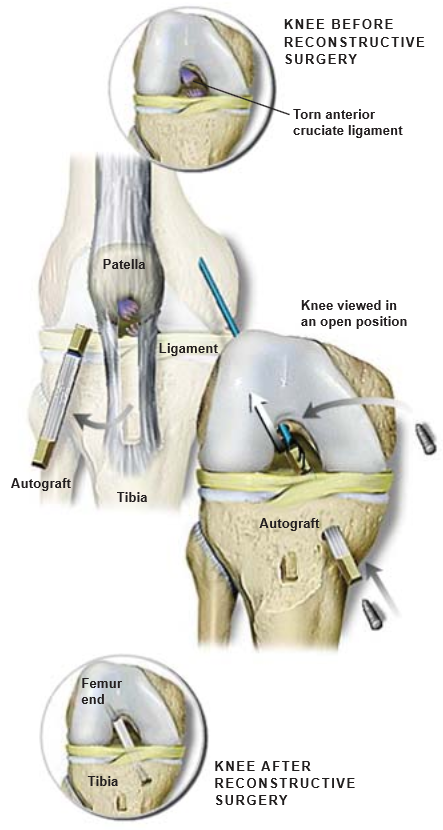Overview
This procedure replaces a damaged anterior cruciate ligament (ACL). The ACL connects the front top of the tibia (the lower leg bone), to the rear bottom of the femur (the thigh bone).

Incision Made
An incision is made over the front of the knee to expose the patella (knee cap), and the patellar ligament, which holds the patella in place.
Autograft Cut
A strip from the patellar ligament and tibia is removed. This section, called an autograft, will be used as a replacement for the damaged ACL.
Arthroscope Inserted
The incision is closed. The rest of the procedure will be performed through small cuts on the sides of the knee. The surgeon uses a small video camera called an arthroscope to see inside the knee and make sure the new ACL is positioned correctly.
ACL Removed
With the knee bent, the damaged ACL is cleared away.
Guide Pin Inserted
A pin is inserted diagonally, from the tibia to the femur. The surgeon will use the pin as a guide to recreate the ACL.
Holes Drilled
Using the pin as a guide, the surgeon drills holes in the tibia and femur.
Autograft Attached
The autograft is attached to the guide pin. It is pulled through the holes and into place.
End of Procedure
The knee is flexed to test the new joint.
